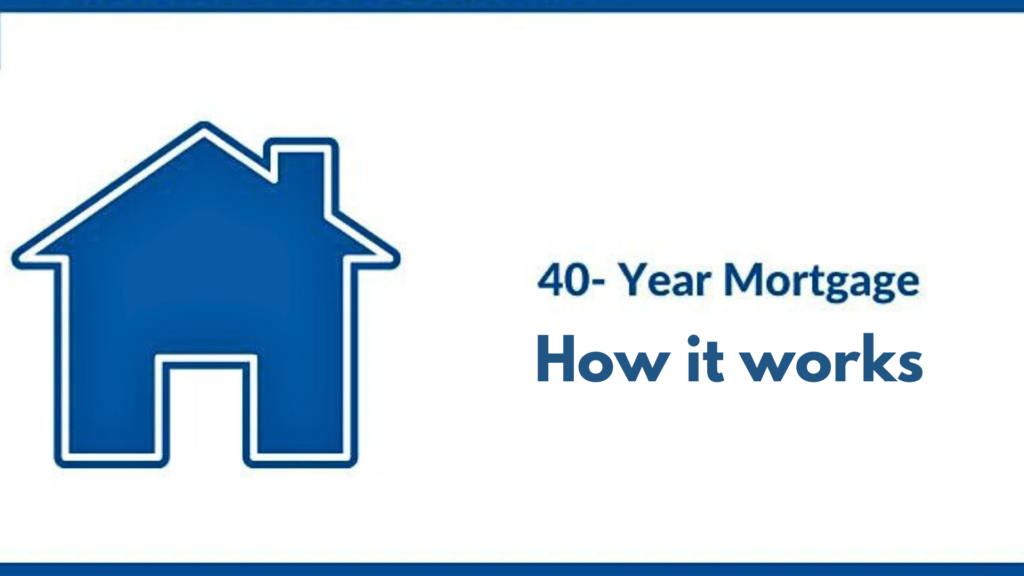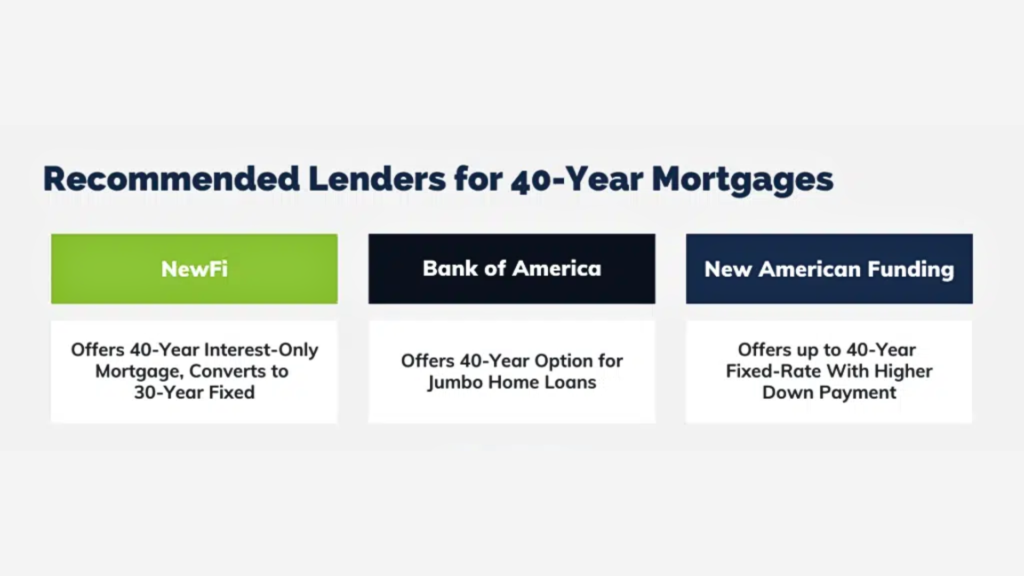Buying a home is one of the most significant financial decisions, and finding the right mortgage option is crucial. While the traditional 30-year mortgage remains popular, another option is the 40-year mortgage loan. This option offers an additional route to homeownership.
But what exactly is a 40-year mortgage loan, and how is it different from other loan options? Stay glued as we explore the basics of a 40-year mortgage, its pros and cons, and the requirements you need to meet if you decide it’s the best option for you.
What Is a 40-Year Mortgage?
A 40-year mortgage is a long-term house loan arrangement in which the borrower agrees to pay off the mortgage over 40 years. This kind of loan is not as common as traditional 15- or 30-year mortgages, but it can be a desirable option for borrowers who want to lower their monthly payments.
With the loan term spread out over 40 years, the monthly payments are smaller, making it easier for some borrowers to afford a home in areas with high real estate prices.

However, compared to a 30-year mortgage, a more extended repayment means you’ll pay off your home for an additional ten years. This also means the total interest will be higher, and you’ll need to make 480 payments over four decades.
How Does a 40-Year Mortgage Work?
The 40-year mortgage is very similar to other types of home loans, but the difference is the longer mortgage payment duration. Here’s a breakdown of how it works:
Loan Structure
A 40-year mortgage can be a fixed-rate or adjustable-rate loan. In a fixed-rate mortgage, your interest rate stays the same throughout the loan’s duration, while an adjustable-rate mortgage (ARM) starts with a fixed rate for a few years and then changes based on market conditions.
Monthly Payments
The monthly mortgage payments are lower than shorter loan terms because the loan is spread out over 40 years. This makes homeownership more accessible to people who may find it difficult to make high monthly payments on a 15- or 30-year loan.

Interest
You will have to pay more interest over time to make up for lower monthly payments. The longer it takes you to pay off your loan, the more interest you will ultimately pay, making the home more expensive in the long run.
Amortization
A 40-year mortgage is typically fully amortized, meaning each monthly payment covers both interest and principal, reducing the loan balance over time. This is similar to other types of mortgages.
ALSO READ: How To Reduce Your Mortgage Timeline by Paying Biweekly
40-Year Mortgage Loan Requirements
There are specific requirements for obtaining a 40-year mortgage loan, which can vary depending on the lender. Here are a few general qualifications that most borrowers will need to meet:
- Credit Score: While the specific score needed may vary depending on the lender, a good credit score of at least 620 is typically required for conventional loans, including a 40-year loan.
- Down Payment: Some lenders may see a 40-year loan as riskier because it takes longer to repay, so they might ask for a higher down payment to reduce the loan-to-value ratio.

- Debt-to-Income Ratio: Lenders will evaluate your debt-to-income (DTI) ratio, the percentage of your monthly income that goes toward paying debts. Most lenders prefer a 40-year mortgage loan with a DTI of 43% or lower.
- Employment and Income Verification: Like other mortgage loans, you’ll need proof of income and stable employment to show your ability to repay the loan over time.
40-Year Mortgage Lenders
Finding 40-year mortgage lenders can be tricky since this loan isn’t as common as shorter-term options. However, some lenders offer this kind of mortgage, especially for those borrowing in expensive real estate markets. When searching for a lender, you must compare 40-year mortgage rates and terms to be sure you’re getting the best deal possible.

You also want to make sure you use a 40-year mortgage loan calculator, which can be a helpful tool in deciding whether this type of mortgage is right for you before you make any down payment to the mortgage lender. Using a mortgage loan calculator can give you a clearer picture of how a 40-year mortgage compares to shorter loan terms, helping you make an informed decision.
ALSO READ: Smart Strategies To Get the Lowest Mortgage Rates on the Market
Benefits and Drawbacks of the 40-Year Mortgage
Before jumping into a 40-year mortgage, carefully considering the pros and cons is essential. Here are the key benefits and drawbacks of this type of loan:
Pros
- Lower Monthly Payments: The most significant benefit of a 40-year mortgage is the lower monthly payment. This allows you to manage your budget more effectively because the loan term is longer and the monthly payment is smaller.
- Increased Affordability: The lower monthly payments can help you afford a home with high real estate prices that would otherwise be out of reach with a shorter loan term.
- Flexibility: This mortgage plan allows you to manage other financial goals while maintaining homeownership. Since your monthly mortgage payment is lower, you could invest, save more for retirement, or pay for other major expenses.

Cons
- Higher Total Interest: The main downside of a 40-year mortgage is the higher interest paid over the life of the loan. This means you’ll end up paying a lot more for the house than you would with a 15- or 30-year mortgage.
- Slower to Build Equity: It will take longer to own your home outright because you’re paying off the loan more slowly. Your home’s equity will also increase at a considerably slower rate.
- Limited Lender Availability: Not all mortgage lenders offer 40-year loans, and because they’re not common, you might have fewer options when looking for one.
Factors That Influence the 40-Year Mortgage Rates and Interest Rates
Like other loan options, 40-year mortgage rates can be influenced by several factors, like the borrower’s credit score, loan amount, and overall market conditions. Even though interest rates on 40-year mortgages are generally similar to those on 30-year mortgage loans, you may pay more in the long run due to the long-term repayment period.

Plus, the interest rate is likely to change based on several factors determined by mortgage lenders. They often base their rates on factors like creditworthiness, down payment, and economic market trends (e.g., inflation and the federal funds rate).
So, when considering a 40-year mortgage, it’s essential to look around for the best rates and terms to reduce the overall cost of your loan. But try to weigh the pros and cons carefully before deciding on a mortgage loan option so you can choose the right path to homeownership.

